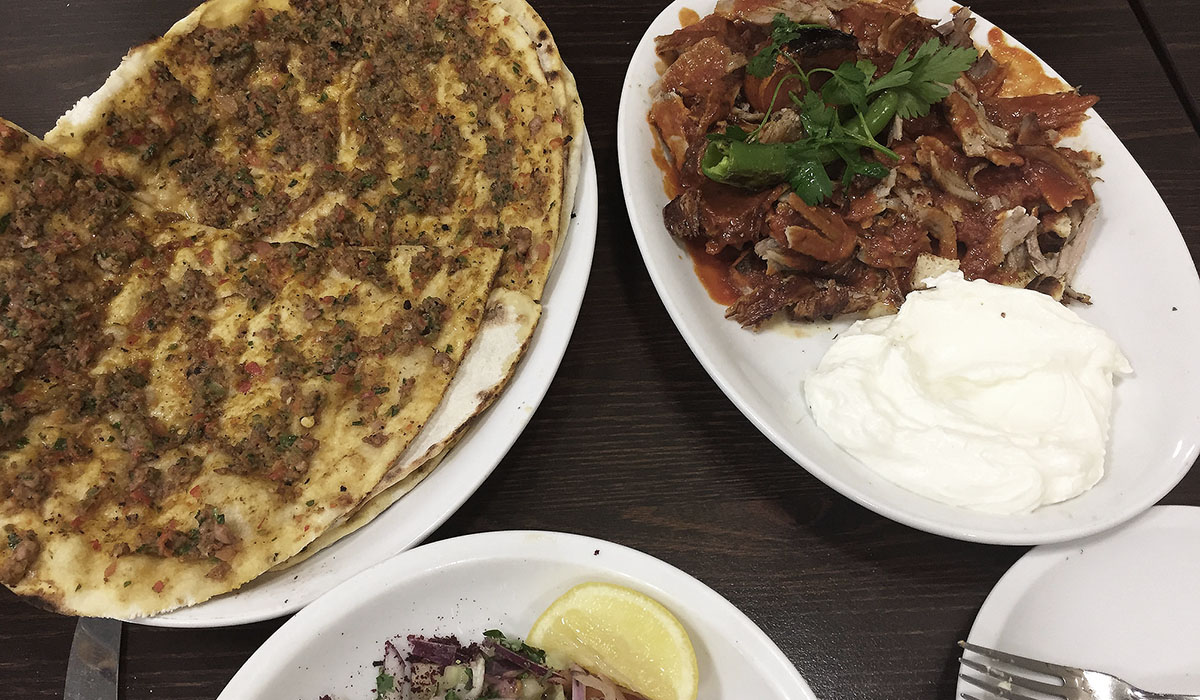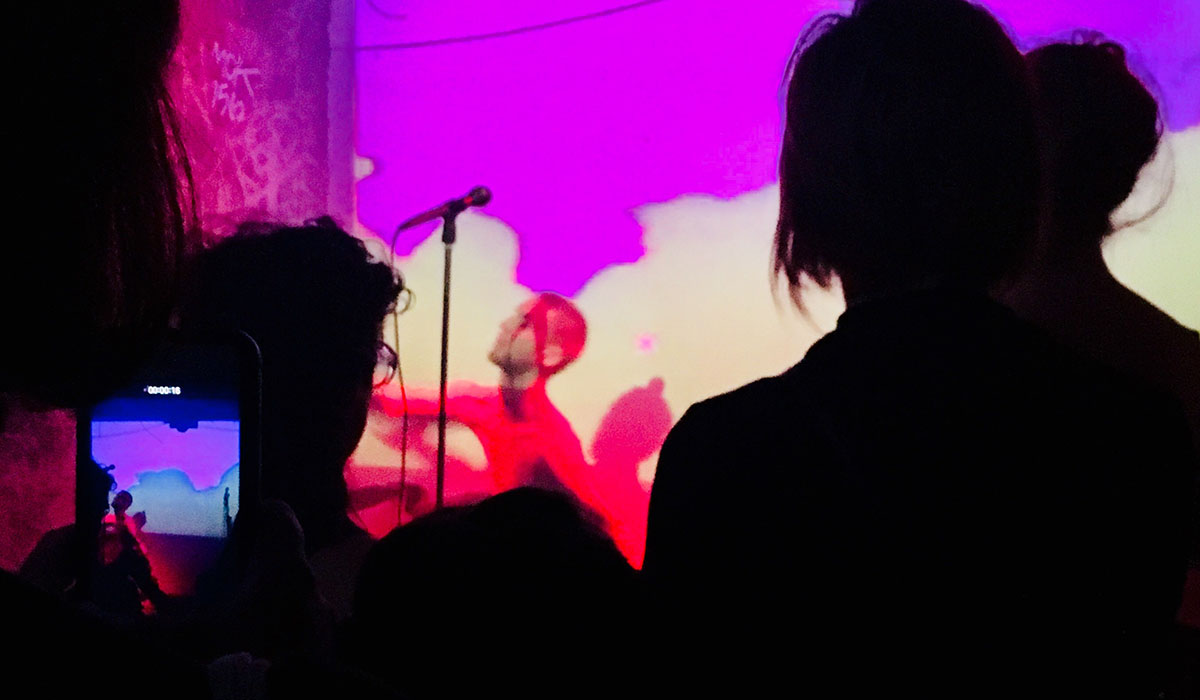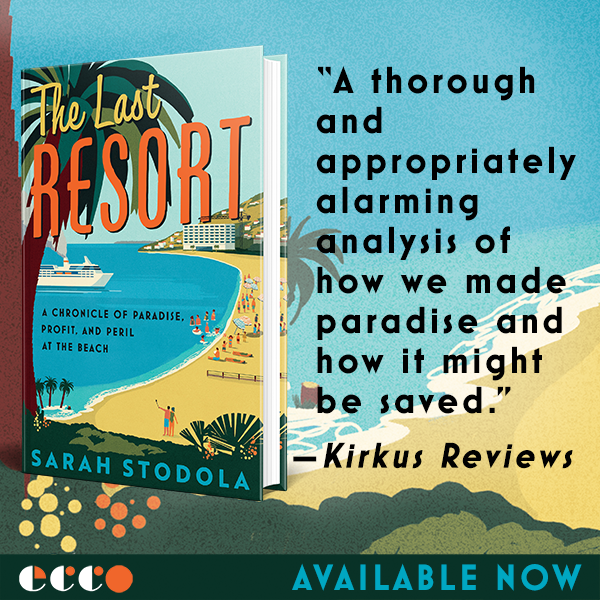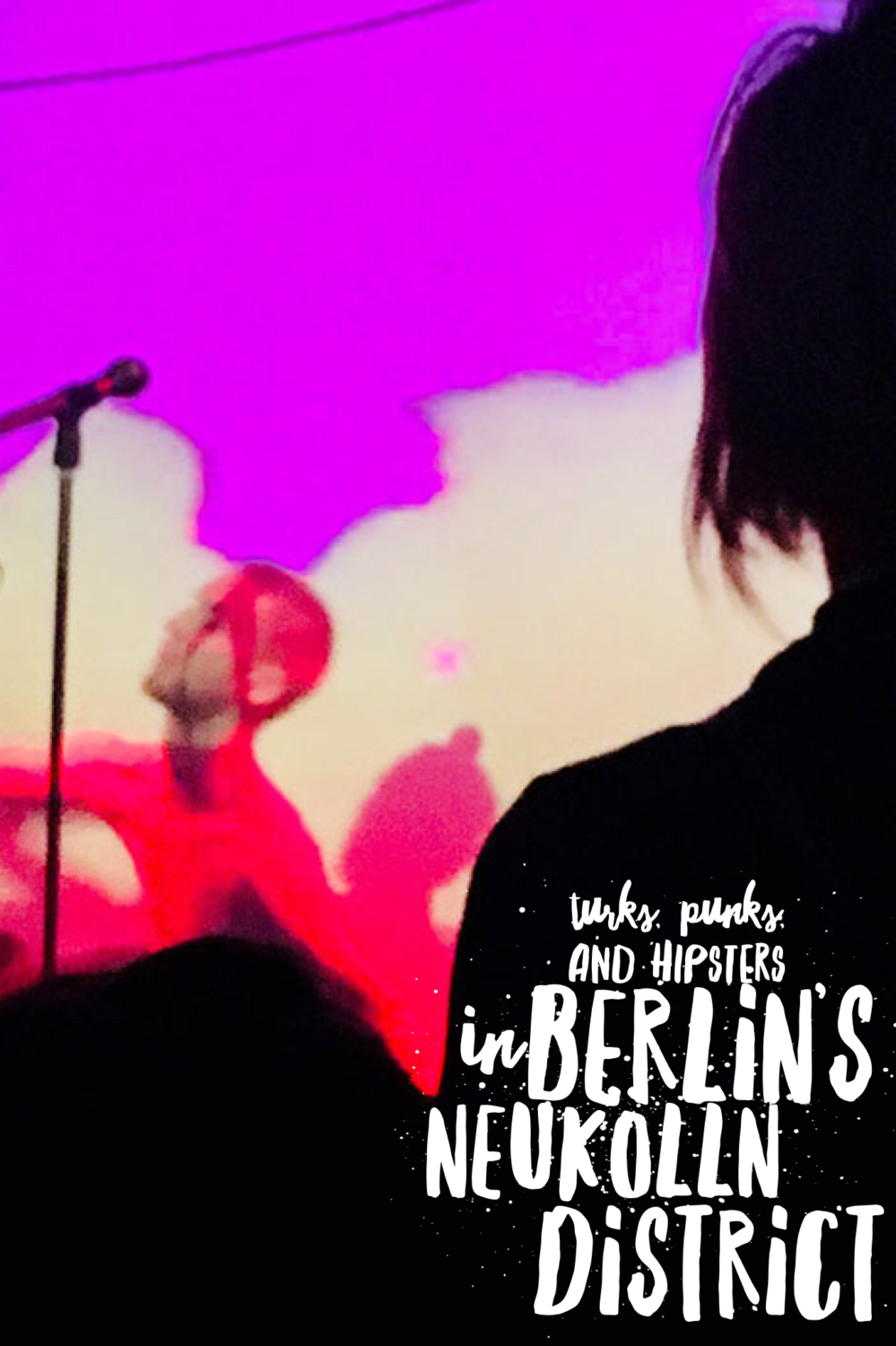It’s my first night in Neukölln and I’m itching for a Turkish pizza. Comprised of flatbread spread with a thin layer of curried meat and served alongside salad, mint and cucumber yogurt, plus herbs, lemons and pickles, all for you to pile on the pizza as you please before rolling it up and stuffing it in your mouth–it’s fresh and satisfying at the same time.
As a Persian, anything served with minty yogurt makes me want to sing. We call it mast-o-khiar in Iran (a very literal “yogurt-and-cucumber”), and eat it liberally. They call it cacik in Turkey, and the Greek variant is tzatsiki. Sour and salty yogurt also comes in drink form in both Turkish and Persian cultures. The Turkish variant is called ayran—a surprisingly addictive mixture of yogurt, water, and salt. It’s instantly refreshing on a humid day, and the best hangover cure I’ve discovered to date. The Persian version, called doogh, is similar, but effervescent and minty.
It might seem odd to consider Turkish and Persian cultures so close, but this is nothing new to anyone from Iran. Turkish culture is the closest to our own (aside from those of Azerbaijan and Armenia, two countries whose histories have at time aligned closely with Iran’s), and many northern Iranians have some kind of Near Eastern heritage in their family trees. In my family, it was my grandfather’s father who was Turkish, back when Turkish was the second language you learned if you grew up in Iran. As a homesick Iranian New Yorker living in a time when international relations between the United States and Iran are quite strained, an evening at a Turkish restaurant (albeit in Berlin) fills me with a strangely familiar warmth. I can tell that my dinner buddy, Jack–an erstwhile New Yorker who lived for a stint in Turkey–shares a similar sentiment. Shortly put, it hits the spot.
So does the delicious aniseed flavored Raki that we’re drinking, a clear Turkish liquor that turns cloudy with the addition of ice cubes (for the brave) or water (for the more temperate). It’s similar to Greek Ouzo. We tried to order more water for ours and ended up with two more glasses of Raki on our table instead. It might be that the Raki is responsible for my nostalgia tonight. Jack warns me as I order two cups for us at the start of our meal, that we’re going to feel emotional soon. “You see,” he says, “in Turkey, we drink Raki and then we feel all loved up, and then we cry.” He smiles, and shrugs as he drains one of the cups in front of him. I follow suit. I’m hoping not to cry, but I know the night is young. And we have a pleasant stretch of bar hopping and aimless street wandering ahead of us. Street wandering is a special delight in Berlin, where people commonly buy a weg-beer (“beer for the way’) from the späti (corner deli), strolling and sipping to their heart’s delights.
Berlin’s Neukölln district, like adjacent Kreuzberg, is home to a longstanding Turkish population, and growing Middle Eastern population. The main stretch—on Sonnenallee—is densely populated with Turkish stores selling imported groceries and homemade Turkish bread (which, I quickly realize, is not unlike Iranian Barbari bread, a sort of wide flatbread that’s crusty on the outside, and fluffy on the inside). These markets are flanked with Middle Eastern kabab joints and hookah cafes, though I’m disappointed to notice that the cafes are near exclusively populated by men, and I intuitively know that pulling up a stool to order my own hookah would be more than a bit of a faux pas.



Laced between all these places are German bars and several bridal stores showcasing aggressively loud tulle and glitter clad mannequins in their window displays. Many of Berlin’s young population now live alongside the Turkish and Middle Eastern communities that populate Neukölln, and a familiar hipster sprawl is interwoven within these layers of urban life as well, boasting among other things, a rooftop bar and performance space called Klunkerkranich that resides on top of a shopping mall (you access it via the ramp in parking lot above the mall), and a very, very gay and delightfully kitsch dance club called Schwuz. Taken all together, these different elements give the ‘worn-around-the-edges’ neighborhood a distinct mix-and-match flair.
Tonight, the weather is sticky and hot, and we try to sit in a mostly empty bar though it’s too muggy for Jack to enjoy the warming pilsner he’s washing down, or for me to enjoy the too-sweet weinschorle I’m sipping. It’s basically a white wine spritzer but the name sounds less old-lady-like in German, and—lucky for me—it’s far more commonly ordered here. Struggling in the heat, we take to the nearest späti for a weg-beer, and roam around for a bit, enjoying the slight breeze that cuts into the humid air. Eventually, we settle side by side on a perch carved into the side of a building. We sip beer and chat happily. Across the street, three young German girls are sitting cross legged on the ground, also chatting and sipping on späti beers of their own. Further down the block, a couple of people are lolling about doing the same—all having no doubt taken to the street for the cooler air and cheaper beer.
Tomorrow, we’ll have dinner on my friend’s balcony. The old GDR buildings in this district (like other neighborhoods that used to be part of East Berlin) commonly house flats with sweeping high ceilings, wide planked wooden floors, and a small balcony off the kitchen or living room, with just enough room for a couple chairs. Despite the size of these lofty apartments, it’s the tiny balconies that get the most wear, as groups of people pile onto them to while away an evening of eating, chatting, and watching the sun go down.
We don’t know yet that we’ll wander afterwards into a bar without a name where lots of kids hang around outside, squeezing into the back room to find a tall naked man performing a surprisingly good art piece comprised of lines from 80s songs, as he throws flower petals against a thumping techno beat. Nor that after that, we’ll feel a little too old for the early twenty-something crowd and move on to Syndikat, an old school punk bar that’s clearly seen more than a bar fight or two in its day. It’s not the kind of place you go for anything other than beer or shots. We’ll each order a Mexicaner—an odd but delicious shot that tastes like a concentrated Bloody Mary–smoke half a pack of cigarettes, and listen to metal for a while, before stumbling home to polish off the night by watching the sun eke into the sky on the tiny balcony of the flat we’ve rented.
For now, however, we’re content to sip our beers, legs dangling from the side of the building, talking about everything and nothing, as we wonder if it’s too soon after dinner to slip into a late night Syrian kebab joint for a shawarma.







